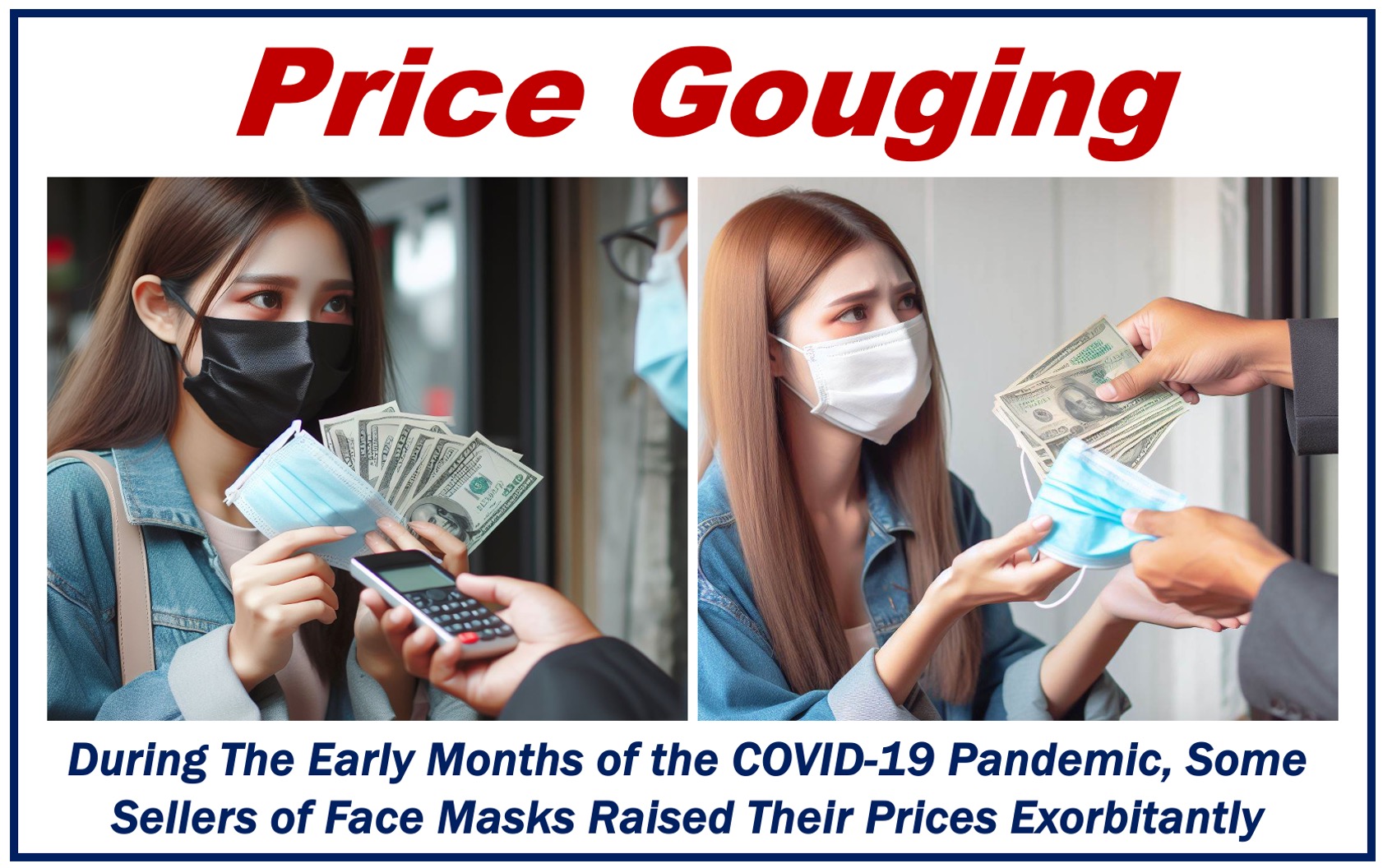What is price gouging?
A business that increases the prices of its goods or services to a much higher than reasonable or fair level during a crisis is guilty of Price Gouging. This phenomenon commonly occurs after a demand or supply shock, following a crisis, emergency, or natural disaster.
Companies and individuals involved in price gouging raise their prices when they know that demand for their product has suddenly risen dramatically and consumers are stuck – they cannot buy from anywhere else.
The Oxford Learner’s Dictionary has the following definition of price gouging:
“The action or practice of increasing prices a lot, especially in order to take advantage of sudden high demand. Example sentence: ‘Drug and medical supplies companies were accused of price gouging in the early stages of the pandemic.'”
Price gouging – understanding the concept
When there is an emergency, consumer demand for certain products or services, such as gasoline, bottled water, batteries, or taxi services (during a strike by public transport workers) can skyrocket.
Some sellers take advantage of people’s urgent need for their products or services by charging exorbitant prices. During the emergency, some sellers have a captive market, that is, consumers have limited or no alternative options for obtaining their goods or services.
Price gouging is seen as unethical. In fact, in many parts of the world, this kind of abuse is illegal.

A problematic phenomenon
Price gouging occurs when consumers are at their most vulnerable. Even if there is legislation banning the practice, enforcing the law during a crisis is either impossible or extremely difficult.
Consumers who are informed about their rights can report instances of abusive business practices. If enough people report unscrupulous sellers, the authorities can take legal action against them.
Price gouging vs. profiteering
Although these two terms refer to similar abusive business practices, their meanings are slightly different.
Price gouging is only a short-term phenomenon and is limited to essential goods and services.
Wikipedia explains the difference between profiteering and price gouging below:
“Price gouging is similar to profiteering but can be distinguished by being short-term and localized and by being restricted to essentials such as food, clothing, shelter, medicine, and equipment needed to preserve life and property.”
Examples of price gouging
Below, you can read about some situations when sellers abused their dominant positions and raised prices excessively:
-
Hurricane Katrina (2005)
After Hurricane Katrina devastated southeastern Louisiana in the USA, reports emerged of exorbitant price increases of water, gasoline, other essential goods, and hotel rooms.
-
London Underground (subway) strike (2015)
When underground train drivers went on strike in London, UK, Uber, the ride-sharing company, faced criticism for raising its prices by up to three times the normal rates.
-
California Wildfires (2018)
Following destructive wildfires, several businesses were accused of raising the prices of bottled water, electricity generators, and other emergency supplies.
-
COVID-19 Pandemic (2020)
There were reports all over the world of price gouging on essential items such as face masks and hand sanitizers.
-
Texas Winter Storm Uri (2021)
During a severe winter storm, which caused widespread power blackouts and water shortages, prices of food, water, and hotel accommodation skyrocketed.
-
Venezuelan Economic Crisis (ongoing)
There are often shortages of essential items in Venezuela. Extreme price increases of food, medicine, and household supplies are common.
Video – What is a Captive Market?
In this visual guide, presented by our affiliate channel, Marketing Business Network on YouTube, we explain what a “Captive Market” is using straightforward language and easy-to-understand examples.

